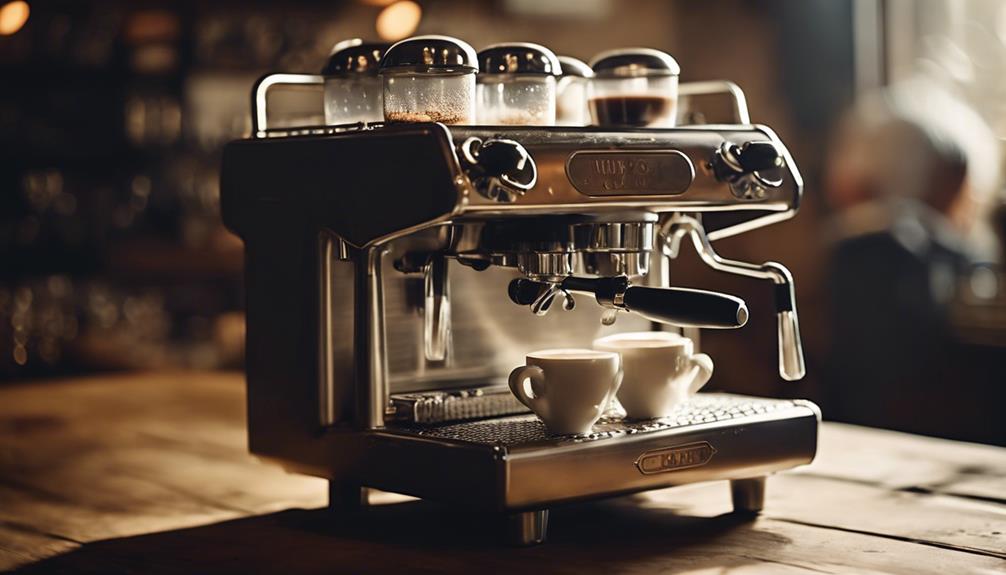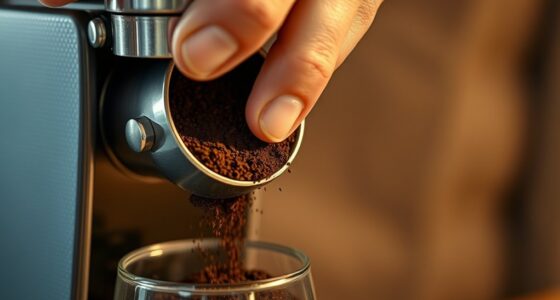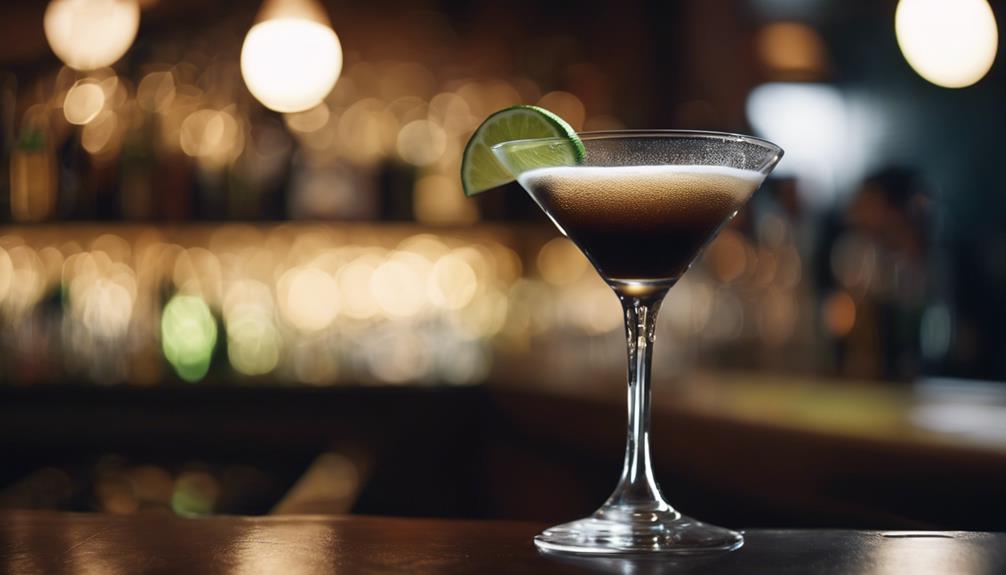You are on the brink of delving into the genuine realm of Italian espresso, where each cup offers a sensory journey deeply ingrained in the nation’s lively culture and lifestyle. With an average of 2-3 espressos consumed per person daily, coffee plays a crucial role in everyday life in Italy, promoting communal experiences and interactions in over 200,000 coffee bars. From traditional beverages like cappuccino and macchiato to honing brewing skills at home, there is a plethora of exploration awaiting. As you unravel the rich legacy of Italian coffee, you will discover even more secrets to relishing the perfect cup.
Key Takeaways
- Italian Espresso is a rich, concentrated coffee drink that serves as the foundation for various authentic Italian coffee drinks.
- To master Italian Espresso at home, use a Bialetti stovetop espresso maker, a good coffee grinder, and high-quality Italian coffee beans.
- The brewing method significantly enhances the aroma and flavor of Espresso, with factors like water temperature and grind size playing crucial roles.
- In Italy, Espresso is an integral part of daily life, with an average consumption of 2-3 Espressos per person daily, fostering social interactions and community.
Italian Coffee Culture Essentials
As you explore the world of Italian espresso, it's vital to understand that coffee is woven into the very fabric of Italian daily life.
You'll soon discover that Italians have a deep affection for their coffee, consuming an average of 2-3 espressos daily.
This love for coffee is deeply rooted in the country's unique culture, where social interaction and communal experiences are highly valued.
In Italy, coffee bars serve as social hubs, with over 200,000 establishments fostering a culture of communal coffee breaks, known as fare la pausa.
This is where you'll find locals gathered around the espresso machine, chatting and laughing as they savor their daily dose of caffeine.
As you immerse yourself in Italian coffee culture, you'll notice that espresso is the star of the show, accounting for about 70% of total coffee consumption.
Types of Authentic Italian Coffee
As you explore the world of Italian coffee, you'll want to familiarize yourself with the authentic drinks that make this culture so rich.
You'll soon discover that espresso is the foundation of many beloved beverages, each with its unique characteristics and traditions.
From classic espresso to cappuccino, macchiato, caffè lungo, and caffè corretto, you're about to uncover the fascinating nuances of Italy's coffee heritage.
Espresso Basics
Delving into the world of authentic Italian coffee, you'll discover a variety of espresso-based drinks that have become an integral part of the country's rich coffee culture.
At the heart of it all is espresso, the foundation of Italian coffee, characterized by a rich, concentrated flavor. When you order an espresso, you'll typically receive a small cup meant to be consumed quickly at the bar.
But what makes a great espresso? It starts with the brewing process, which requires precision. The ideal brew ratio is 14 grams of coffee to 28 grams of water, and the use of finely ground coffee beans is essential to optimize extraction and flavor. With the right beans and technique, you'll experience the perfect shot of espresso.
From there, you can explore variations like cappuccino, macchiato, caffè lungo, and caffè corretto, each with its own unique characteristics and traditions.
But it all begins with a deep understanding of espresso basics.
Authentic Italian Drinks
Now that you've mastered the art of brewing the perfect espresso, you can explore the diverse range of authentic Italian drinks that have evolved from this rich and concentrated coffee foundation. Try a classic cappuccino or a luxurious latte, or experiment with something more adventurous like a macchiato or affogato. Whatever you choose, starting with the best espresso in your area will be the key to unlocking the full potential of these delightful Italian beverages. So, whether you’re enjoying a leisurely morning at home or seeking out a cozy café, take the time to savor and appreciate the true essence of Italian coffee culture.
As you investigate the world of Italian espresso, you'll discover a variety of drinks that showcase the country's passion for coffee.
Here are three authentic Italian drinks you should try:
- Cappuccino: A classic morning pick-me-up, made with equal parts espresso, steamed milk, and frothy foam.
- Macchiato: An espresso 'stained' with a small amount of steamed milk, perfect for those who prefer a stronger coffee flavor with a subtle creamy touch.
- Caffè Corretto: An espresso 'corrected' with a splash of liquor, often served as a digestif, reflecting the Italian tradition of pairing coffee with a touch of indulgence.
These authentic Italian drinks are more than just a cup of coffee – they're an experience that embodies the country's rich coffee culture.
Whether you're in the mood for a creamy cappuccino or a strong macchiato, each drink is a reflection of the Italians' love for coffee and their expertise in crafting the perfect cup.
Coffee Culture Essentials
What makes Italian coffee culture so unique is the variety of authentic coffee types that have been perfected over time. As you explore the Italian Coffee Experience, you'll discover a love for coffee that's deeply ingrained in the culture.
Let's start with the basics. You'll likely be familiar with Espresso, the most iconic Italian coffee, which is a concentrated shot served in small quantities and forms the base for many other coffee drinks.
But that's not all – there's Cappuccino, a delightful combination of equal parts espresso, steamed milk, and milk foam, traditionally enjoyed only in the morning.
If you're looking for something a bit stronger, Macchiato is an espresso 'stained' with a small amount of steamed milk, making it a popular choice for afternoon consumption.
For a milder flavor profile, try Caffè lungo, an espresso made with more water, resulting in a longer drink.
And for a unique twist, there's Caffè corretto, an espresso 'corrected' with a splash of liquor, typically enjoyed after meals as a digestif.
These authentic coffee types are essential to the Italian Coffee Experience, and once you try them, you'll understand why Italians have such a deep love for coffee.
Mastering Italian Coffee at Home
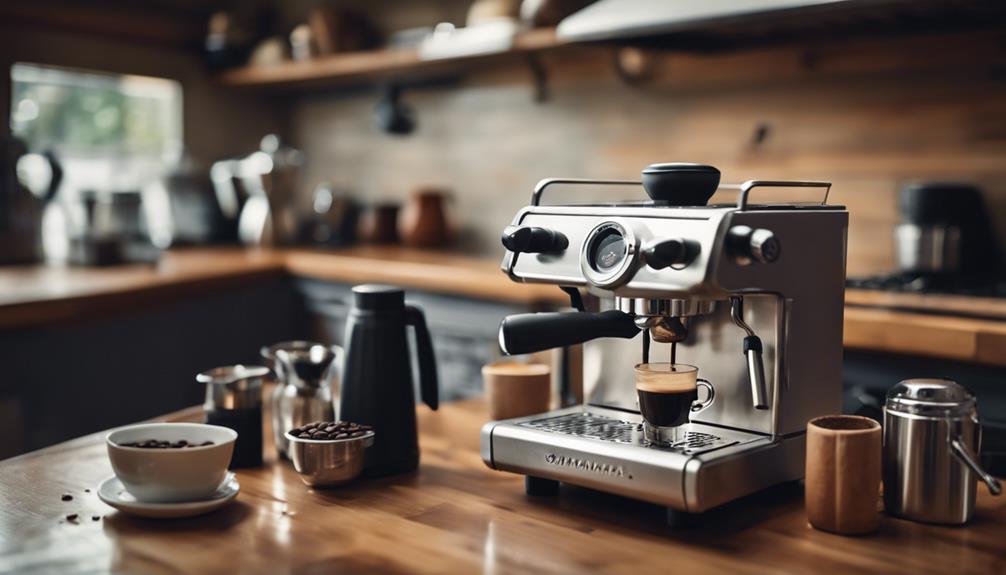
To master Italian coffee at home, you'll need to start with the right equipment – think a Bialetti coffee maker or stovetop espresso maker.
Next, you'll want to focus on sourcing high-quality Italian coffee beans that will give your brews that authentic flavor.
Essential Equipment
You'll need a stovetop espresso maker, like a Bialetti, to brew authentic Italian espresso at home, as it's the key to extracting rich flavors from your coffee grounds. This vital equipment will help you achieve the perfect shot every time.
To complement your Bialetti coffee maker, you'll need a few more items to get started:
- Freshly roasted coffee: Freshly ground Italian coffee beans are essential for an authentic taste experience. Opt for medium to dark roasts to enhance the aroma and flavor profile.
- Coffee grinder: A fine grind is necessary for best extraction and sweetness. Invest in a good coffee grinder to guarantee you get the perfect grind every time.
- Steam wand or frother: If you want to make cappuccinos at home, you'll need a steam wand or frother to create microfoam from milk.
With these vital equipment and ingredients, you're well on your way to mastering Italian coffee at home. Remember, the key to an authentic Italian espresso experience lies in the quality of your equipment and ingredients.
Italian Coffee Beans
With your stovetop espresso maker and complementary equipment in place, it's time to focus on the heart of authentic Italian espresso: selecting and preparing high-quality coffee beans that will elevate your brews to new heights.
When it comes to Italian coffee beans, you can't go wrong with trusted brands like Lavazza and Illy, known for their rich flavor profiles. Choose medium to dark Italian roast beans, which provide the deep, concentrated flavors characteristic of traditional Italian coffee.
Freshly grinding your coffee beans just before brewing is essential for ideal freshness and aroma. Italian coffee beans are often sourced from high-elevation regions, where the slower maturation process develops more natural sugars, contributing to the sweetness of the final brew.
To get the best coffee, aim for a brewing ratio of 14 grams of coffee to 28 grams of water, ensuring a balanced extraction and rich flavor.
Selecting the Perfect Coffee Beans
Rich flavor profiles await when you choose the right coffee beans, as the perfect blend is essential to an authentic Italian espresso experience.
As you commence on this journey, remember that medium to dark Italian roast coffee beans are the way to go. These beans provide the characteristic rich flavor profile that Italian coffee is known for.
Here are some tips to keep in mind when selecting the perfect coffee beans:
- Opt for renowned brands: Brands like Lavazza and Illy are highly regarded for their quality and are widely used in traditional Italian coffee bars.
- Freshly grind your beans: Grinding your coffee beans just before brewing enhances the aroma and flavor of your espresso.
- Choose high-elevation beans: High-elevation beans are preferred due to their natural sweetness and complex flavors.
Exploring Rome's Coffee Scene
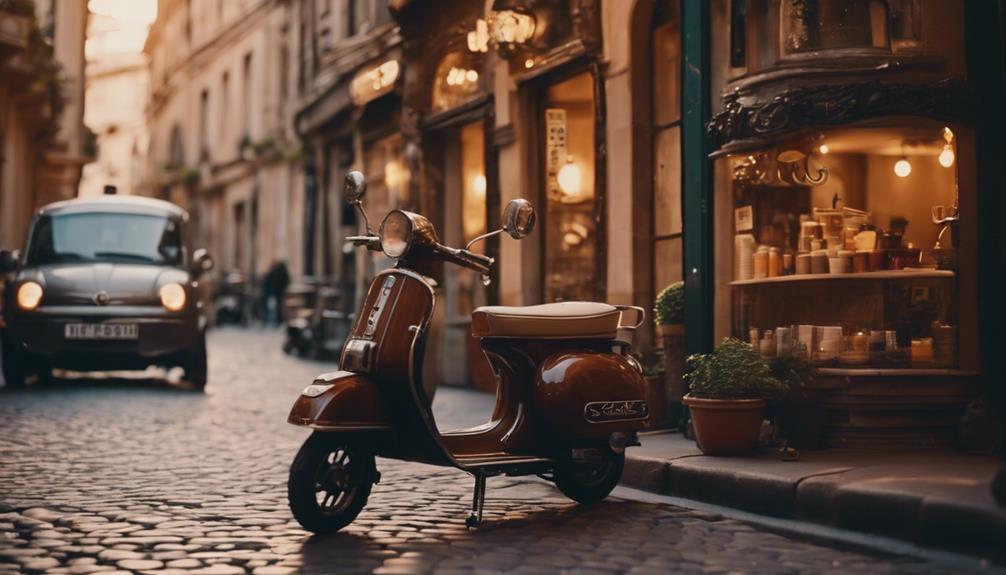
Step into Rome's vibrant coffee culture, where the aroma of freshly brewed espresso fills the air and locals gather in over 200,000 coffee bars to socialize and savor every sip. As you explore the city, you'll discover a rich tradition of coffee-making that's deeply ingrained in Roman daily life.
| Coffee Culture | Roman Traditions |
|---|---|
| 200,000+ coffee bars | Gathering spots for locals |
| Traditional drinks | Cappuccino, macchiato, and more |
| High-quality espresso | Praised by locals and visitors alike |
| Innovative brewing | Enhancing Rome's coffee reputation |
| Guided tours | Explore renowned cafés and history |
You'll find that traditional Italian coffee drinks, like cappuccino and macchiato, are staples in Roman cafés, often made with steamed milk and a shot of rich espresso. With the average Roman consuming around 5-6 kg of coffee per year, it's clear that coffee is an integral part of the city's fabric. As you indulge in Rome's coffee scene, you'll experience the perfect blend of tradition, culture, and delicious flavors.
Coffee and Italian Tradition Unite
As you explore the world of Italian coffee, you'll discover that espresso is the thread that weaves together daily rituals, social interactions, and cultural traditions. It's the heart of Italian coffee, and its significance extends far beyond just a cup of coffee. In Italy, coffee bars serve as social hubs where locals gather to enjoy their espresso quickly while standing at the bar, reflecting a deep-rooted tradition of community and connection.
Here are three ways Italian tradition and coffee come together:
- Fare la pausa: Taking a coffee break is an essential part of the Italian lifestyle, emphasizing the importance of savoring moments and enjoying quality coffee.
- Regional variations: From cappuccino in the morning to espresso at any time, regional variations in coffee consumption highlight the cultural significance and rules associated with Italian coffee traditions.
- Social rituals: With Italians consuming 2-3 espressos daily, coffee drinks become an integral part of social interactions and daily rituals, making espresso the heart of Italian coffee culture.
As you investigate deeper into the world of Italian espresso, you'll find that it's not just a drink, but a symbol of community, tradition, and cultural heritage.
Frequently Asked Questions
What Is the Italian Rule for Espresso?
You're wondering about the Italian rule for espresso? Well, in Italy, there are a few rules: you drink it at the bar, not to-go, and milky drinks are only for breakfast, before 11 am!
What Is the Most Popular Espresso Coffee in Italy?
You're wondering what's the most popular espresso coffee in Italy? Well, you'll be surprised to know that it's the classic 'Espresso', accounting for a whopping 70% of the country's total coffee consumption!
What Is True Italian Espresso?
As you savor the rich aroma, you'll discover true Italian espresso is a concentrated, velvety brew made from finely ground beans and high pressure, yielding a naturally sweet, mild, and creamy flavor profile that delights your senses.
Why Is Espresso so Much Better in Italy?
You wonder why espresso tastes so much better in Italy? It's because they use high-quality beans, precise brewing techniques, and skilled baristas who perfect the art of extraction, creating a rich, balanced flavor that you can't replicate elsewhere.
Conclusion
As you've explored the world of Italian espresso, you've discovered a rich culture that's all about passion, tradition, and quality.
And the best part? You can experience it all from the comfort of your own home.
Did you know that Italians consume an average of 600 million espressos per day? That's a lot of caffeine!
With the right beans, techniques, and mindset, you can join the ranks of Italy's coffee connoisseurs and savor the authentic taste of la dolce vita.
